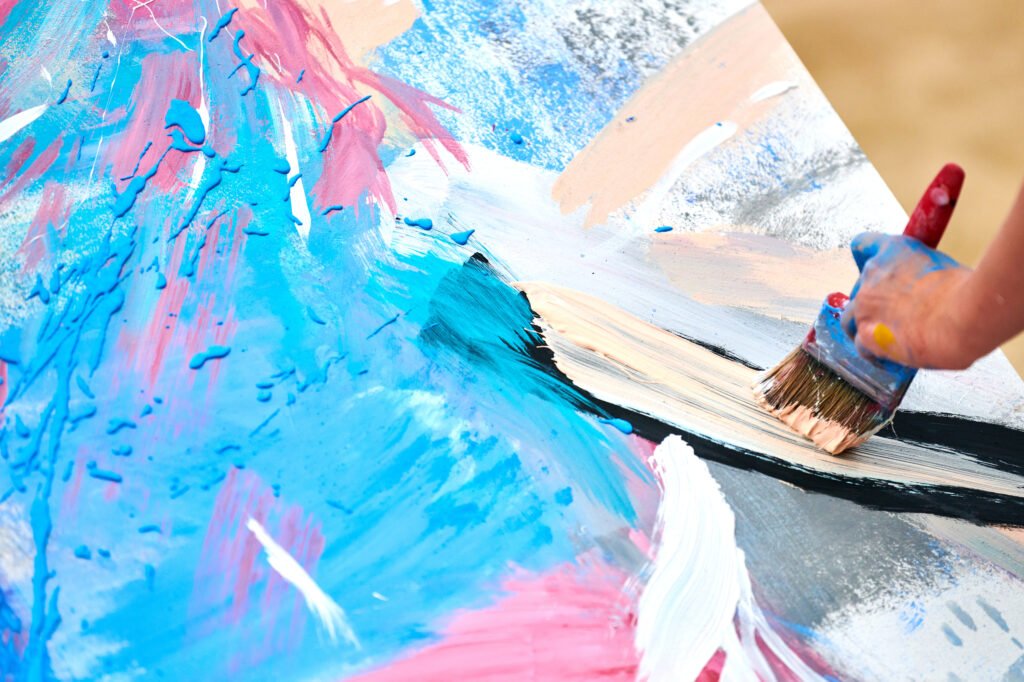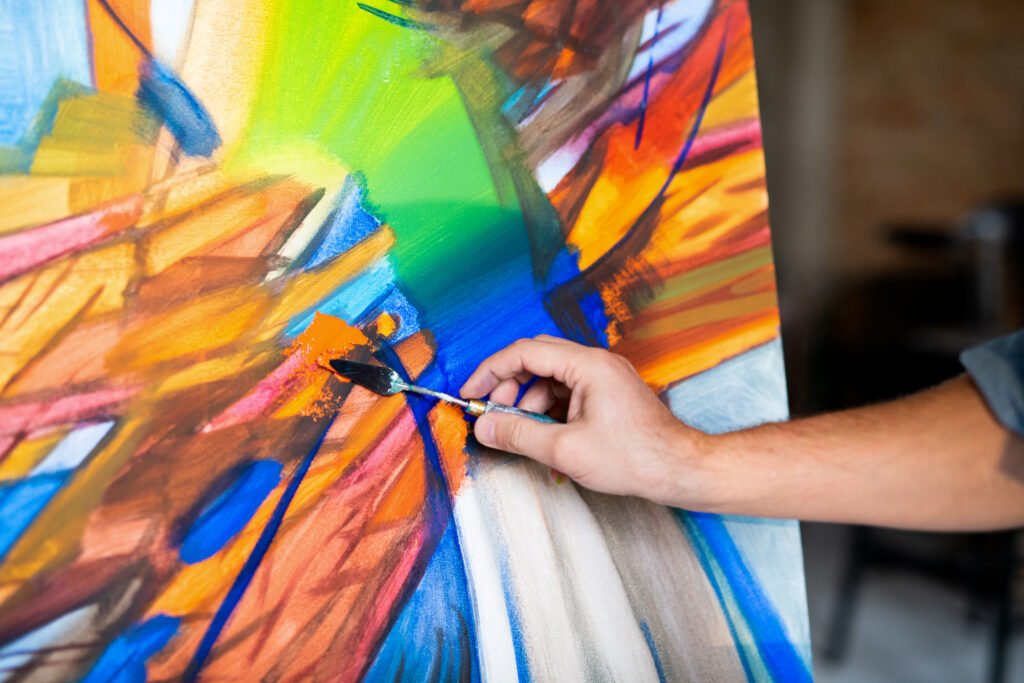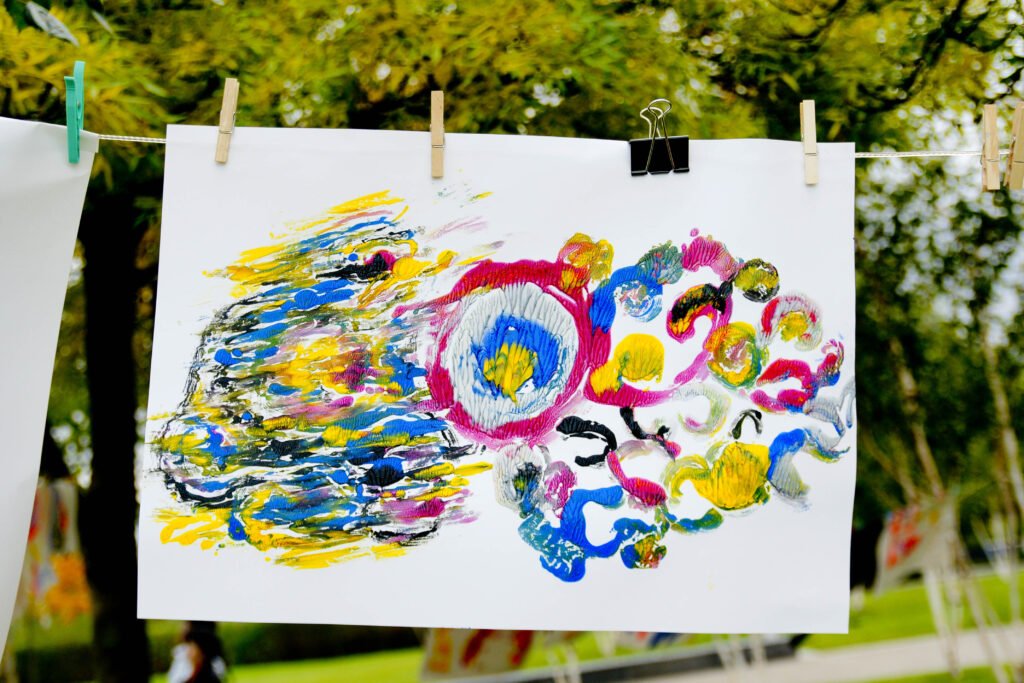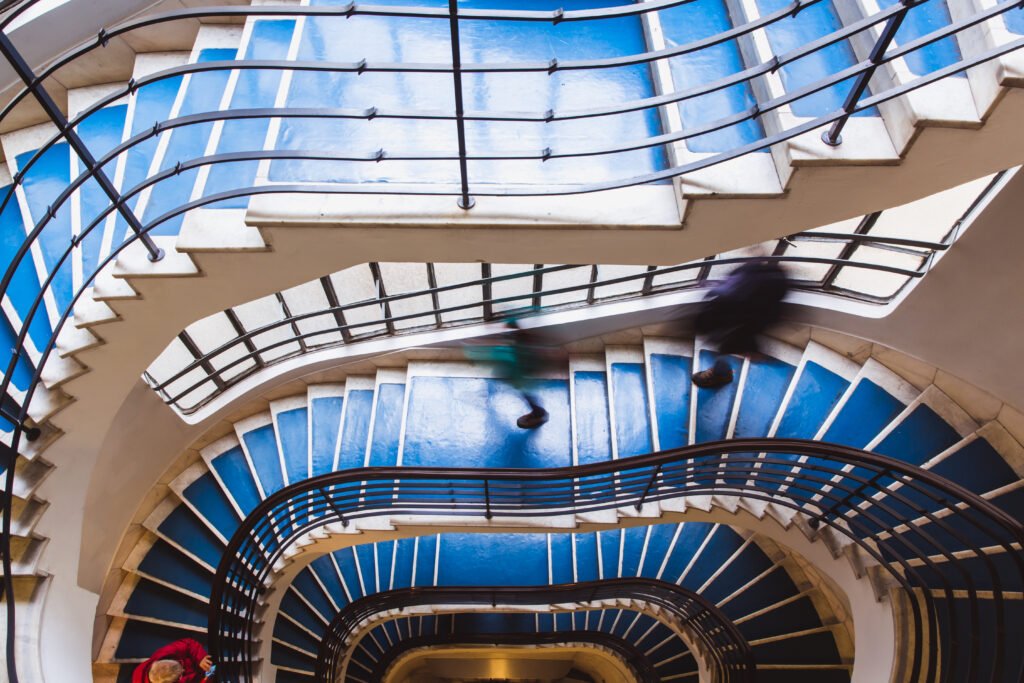Abstract art is often seen as a break from visual tradition, but more than that, it represents the ultimate freedom of artistic expression. By rejecting the direct representation of reality, it opens new pathways for thought, emotion, and interpretation. This freedom goes beyond shapes and colors: it offers a space where the viewer can see themselves, unbound by fixed narratives.
That is why so many collectors, curators, and art lovers choose to buy abstract art. In a world saturated with images and symbols full of predefined meaning, abstract paintings allow for a unique and open-ended experience. They do not tell you what to feel, but instead provoke deep sensations. For this reason, they are valuable both in aesthetic terms and in how they affect the atmosphere of a space.
What Makes Abstract Art So Liberating?
The answer lies in its ability to open multiple meanings. According to the study Abstraction and the Limits of Representation, published in 2020 by Harvard University, abstract art stimulates the brain more broadly because it does not deliver a direct message. Instead, it activates areas related to imagination, introspection, and emotional memory.
This neurological activation is one reason abstract art continues to influence modern and contemporary aesthetics. Every undefined shape and every color without contour becomes an invitation to the unknown. And this is precisely its strength: the absence of boundaries. Unlike figurative art, which often points to a specific narrative or object, abstract art invites the observer to build their own meaning.

This interpretive freedom also directly influences how abstract paintings are used in architectural and interior design projects. Spaces decorated with such works tend to trigger emotional states ranging from calm contemplation to creative unrest. For that reason, many experts recommend abstract art as a central element for anyone wishing to turn space into a sensory experience.
Beyond the visual effect, choosing an abstract work communicates deeper intentions. In homes, it may signal boldness, sophistication, or authenticity. In offices and public spaces, it may reflect openness to innovation and the appreciation of subjectivity. Well, in all cases, it breaks with established visual patterns and proposes new ways of seeing and feeling.
The Value of Boldness
In the contemporary art market, abstract art holds a strategic position. According to the study Global Patterns of Art Investment, conducted in 2021 by Stanford University, abstract works enjoy greater acceptance at international auctions and are among the most sought-after by beginner investors. This trend is largely due to their universal appeal, which transcends cultural and linguistic barriers.
The sale of abstract art has grown exponentially over the last decade, especially through online platforms. Today, it is possible to find the best places to buy abstract art with professional curatorship, authentication, and direct access to artists from around the world. This democratization has expanded the reach of abstract language, making it more accessible without diminishing its prestige.
The symbolic value of abstract art has also drawn the attention of buyers seeking more than decorative objects. When acquiring an abstract piece, the buyer incorporates an idea of freedom, rupture, and authenticity. For many, buying abstract art is also a political and existential gesture.
Therefore, investing in abstract paintings is more than an aesthetic choice. It is a commitment to the multiplicity of perspectives, the richness of the unspoken, and the transformative potential of imagery. Whether for decoration, collection, or spatial transformation, abstract art remains one of the freest and most powerful forms of human creation.



